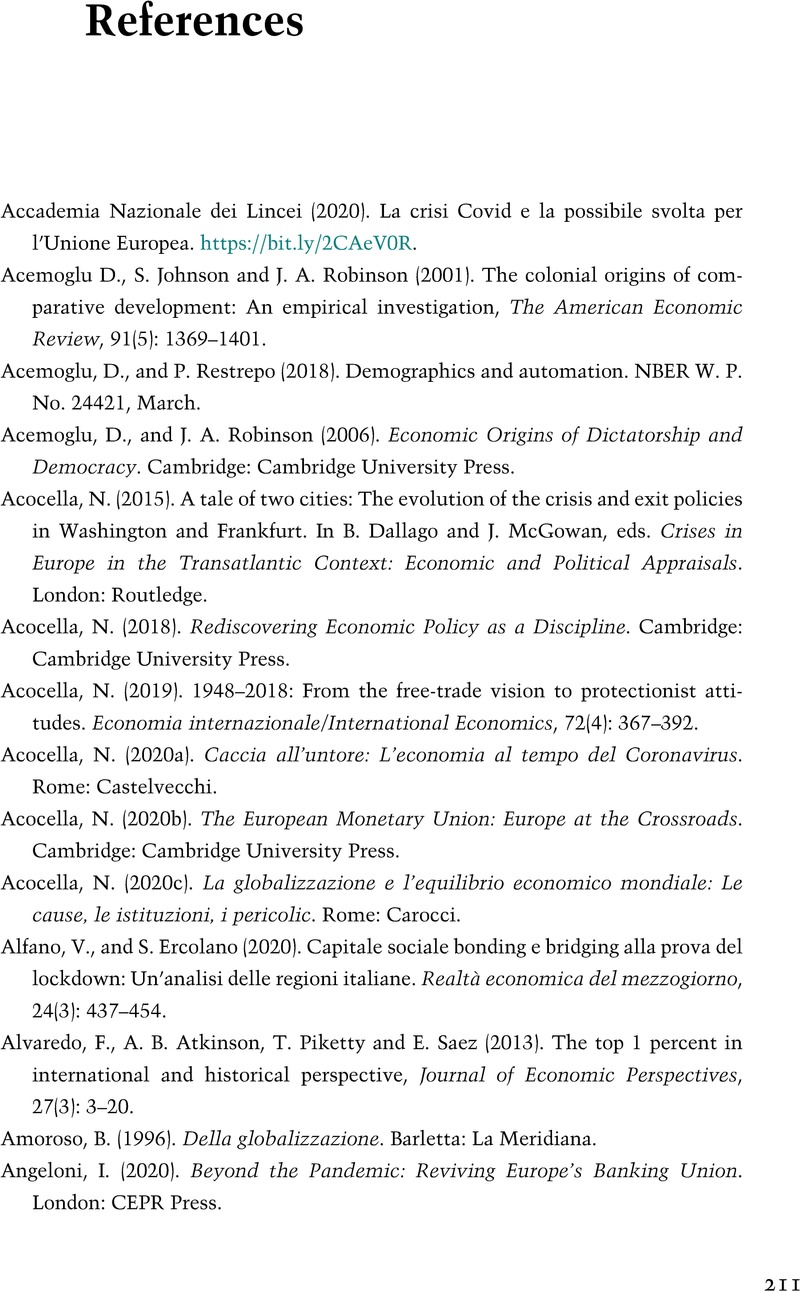Book contents
- Economic Policy in the 21st Century
- Economic Policy in the 21st Century
- Copyright page
- Dedication
- Contents
- Figures
- Tables
- Boxes
- Abbreviations
- Introduction
- 1 The Great Recession and the Pandemic
- 2 Stagnation
- 3 Efficiency, Poverty and Inequalities
- 4 Globalisation
- 5 Pulling the Strings of Our Arguments
- Conclusions
- Glossary
- References
- Index
- Author Index
- References
References
Published online by Cambridge University Press: 27 October 2022
- Economic Policy in the 21st Century
- Economic Policy in the 21st Century
- Copyright page
- Dedication
- Contents
- Figures
- Tables
- Boxes
- Abbreviations
- Introduction
- 1 The Great Recession and the Pandemic
- 2 Stagnation
- 3 Efficiency, Poverty and Inequalities
- 4 Globalisation
- 5 Pulling the Strings of Our Arguments
- Conclusions
- Glossary
- References
- Index
- Author Index
- References
Summary

- Type
- Chapter
- Information
- Economic Policy in the 21st CenturyThe Four Great Challenges, pp. 211 - 227Publisher: Cambridge University PressPrint publication year: 2022



